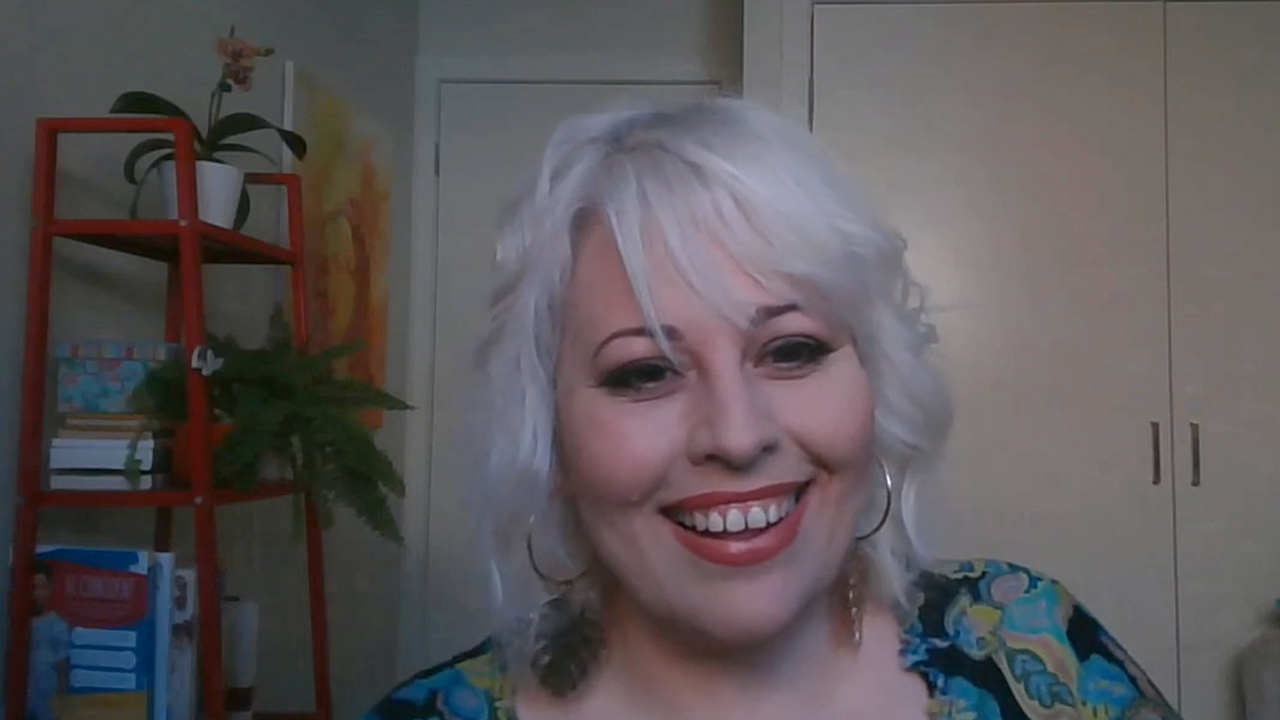Upholding formative assessment in a remote learning environment may seem like an uphill battle with a series of unknowns. For instance, how do educators retain the social element of learning that keeps students connected and engaged, while combating ‘zoom fatigue’? How do you offer meaningful feedback and scaffolded learning in a wholly online setting? Furthermore, how do you nurture the teacher-student dynamic and preserve the quality and integrity of student work?
These are all valid questions that Ingrid Lee, Teaching Focused Academic at Victoria University (VU), has confronted in the design of her teaching program. Ingrid previously sat down with Turnitin (virtually) to discuss the topic of formative assessment online, for an episode of our Integrity Matters vidcast. In it, she shared her experiences and success with formative assessment design in enhancing learning outcomes and the student experience at VU, and explored how her department’s block learning approach has supported the shift to remote learning triggered by the COVID-19 global pandemic.
Read on to learn about Ingrid’s observations and advice for keeping formative assessment alive in an online setting, and how to maintain connected and engaged students.

Ingrid Lee
Before we take a deep dive into Ingrid’s approach for taking formative assessment online, it’s important to understand the block learning pedagogy that guides her current program.
Victoria University is the first Australian university to adopt a 'block' model of learning, which reimagines the traditional degree structure by studying units in sequential blocks instead of semesters. In this model, students study and complete one unit at a time - across the space of three to four weeks - as opposed to dividing their attention across multiple units simultaneously. Teaching sessions are delivered in small classes rather than a lecture format, and instead of a summative exam for the unit, assessments are completed within each four-week block.
The institution credits their award-winning ‘VU Block Model’ with boosting the student pass rate (86.5%) and increasing high distinction grades (28%), which builds on documented successes of this approach at universities in the United States, Canada and Sweden. VU encourages uptake of the block program by students on the basis that its immersive learning experience develops their confidence and independence, and prepares them for success in their future career
Advocates of block learning delivery contend that it allows formative assessment design to truly flourish, in the sense that scaffolded learning is already embedded in the unit structure. In the context of remote learning during COVID-19, Ingrid Lee explains:
“The beauty of working ‘in the block’ during this time, is that we were able to have a much faster pace of reflective practice so we could see what was and wasn’t working and make amendments for the next unit, so we could improve both ours and the students’ experience”

Owing to the block learning model and the agile nature of 4 week teaching cycles, Ingrid notes that no major structural changes were required to their program in an otherwise whirlwind shift to off-campus learning. Nevertheless, like the vast majority of educators, she has grappled with the challenges of a wholly online learning environment in terms of how it affects her students’ learning and impacts her own teaching techniques. She emphasises the inability to “read the room” and detect the energy brought on by a physical group, as a big barrier to gauging class engagement:
“I think the hardest part about learning online is that the pacing is a bit slower and you’re trying to capture that dynamism again of the teacher-student relationship, so it becomes a matter of re-establishing that ecology of practice”.
Although attendance has not been an issue in Ingrid’s classes, students switching their camera off or staying on ‘mute’ at various intervals has become part and parcel of a video classroom. It alludes to the risk of student anonymity and detachment from a video-only learning experience if they are not fully engaged, and the newly-coined phenomena of ‘zoom fatigue’. Most, if not all instructors are dealing with such participation obstacles, and Ingrid believes that reclaiming the social element of learning is an important objective when learning online:
“One of the approaches that I redesigned for this unit was the provision of before-class activities that students undertook, directly informing the in-class practices which are collaborative in nature. So we’re effectively bringing back that social constructivist approach to problem solving”.
Ingrid describes her program’s approach as leveraging technology in an immersive way, and building in traditional, familiar mechanisms so that the platform itself doesn’t dominate: “After students complete pre-set modules teachers set up for them, we all come into the zoom breakout sessions and start having those conversations like we used to.” She likens it to actively re-learning the group’s social cues in an online environment.
A culture of formative learning
Aside from bolstering the social foundation of learning, Ingrid and her team have devoted time to fine-tuning their existing mechanisms for formative feedback and assessment design which have always been the core strength of their program. Ingrid believes that their commitment to a learning model of ‘cumulative progression points’ is what the online experience demands, and has enabled both students and teachers to stay firmly on course during the pandemic’s fallout. She speaks of highly detailed rubrics and robust feedback and feed-forward loops for students, towards applied learning and aligned expectations.
Guiding principles for strong formative assessment online:
- Detailed rubrics, communicated often
- Clear progression points to scaffold learning and give structure
- Strong moderation processes, delivered consistently
- Transparent assessment design ensuring no one gets hidden in the curriculum
- A consistent, overarching expectation across teachers/units
- Peer collaboration and review to promote social learning
- Embodied and experiential learning through authentic assessment
- Ongoing verbal feedback which is transparent and explicit
Getting to the crux of formative assessment, Ingrid values the innovation of her program in dispensing with traditional lectures or summative exams, which she feels can limit learning progression points for students. Not to mention for teachers, when it comes to evaluating their unit and making revisions based on student learning trends. By pursuing the highest measure of understanding and mitigating the risk that students are sitting back and not absorbing information, Ingrid is confident that it facilitates a higher quality of student work:
“By having the in-class practices as the strength of the program that support the assessment, they’re getting the feedback as they’ re learning rather than me having to spend ages writing lots of feedback at the end which they’re probably not going to use for the next assessment anyway”.
Finally, Ingrid is optimistic about their backward-design of assessments in offsetting the likelihood of academic misconduct and its potential escalation in an online space. It’s helped along with technological tools to uphold integrity and originality of work and meet their formative benchmarks:
“If you’re designing assessments where you can see the learning happening in the classroom, then it strengthens the integrity of the product that the student is creating so that it becomes an individual piece for work. I've previously paired this approach with the use of Turnitin, which has been really useful in supporting the academic integrity and literacy of our students” .
An online learning environment carries its own set of challenges at the best of times, so it’s not surprising that shifting to a wholly online setting during a global pandemic would have serious implications on the student learning experience. Inclusive assessment as a means to provide more equitable academic opportunities for people of diverse backgrounds and different needs, is on the radar for institutions now more than ever before. Mental health issues, economic pressures, and a lack of technology access in the home affecting learning attainment and motivation, is just the tip of the iceberg.
Speaking about a ‘duty of care’ and sensitivity that is especially important in the current climate, Ingrid reflects on educator’s responsibility to be a pillar of support for students:
“I think inclusivity has to come from a point of human compassion. it’s about having strong communication, getting back to students consistently, and using discussion forums to have conversations that are not just about the learning that we’re doing.”
Canvassing her student cohort and the mixture of demographics and lifestyles grappling with a changing world, Ingrid advises that “inclusivity is about accessibility, and accessibility looks different for lots of students. They require different online learning supports”. She recalls the differentiated learning strategies that VU has adopted, such as the use of closed captions on videos to support non-auditory learners and provide the written portion they need to absorb the learning materials. At the same time, it means recognising that staying attentive for 2-3 hours on a video call can be overwhelming for many students, and soliciting student feedback for continual improvement measures.
By operating in the block model and working closely with students to gauge learning comprehension in real-time, Ingrid contends that you can flag and address inclusivity issues more quickly, to ensure no one gets lost in a fragmented online space. She advocates for maintaining strong moderation processes, leveraging data to look at patterns of student progress, and impromptu check-ins with colleagues and students.
Key takeaway
Reflecting on the investment in formative assessment by universities and higher education institutions, Ingrid contends that more work is needed; particularly in a future of online and blended learning: “If we really value formative assessment design, then we need to be modelling it as part of the students’ learning experience. You’ve got to have plenty of ways to see how the students are actively learning as they go, instead of determining it at the end, when it’s too late”.




